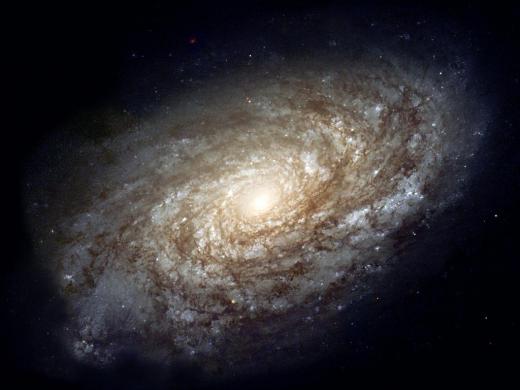What is the Eddington Limit?
 Michael Anissimov
Michael Anissimov
The Eddington limit, also called the Eddington luminosity, is the point at which the luminosity emitted by a star or active galaxy is so extreme that it starts blowing off the outer layers of the object. Physically speaking, it is the greatest luminosity that can pass through a gas in hydrostatic equilibrium, meaning that greater luminosities destroy the equilibrium. Hydrostatic equilibrium is the quality that keeps a star round and approximately the same size over time.
The Eddington limit is named after the British astrophyicist Sir Arthur Stanley Eddington, a contemporary of Einstein who was famous for confirming the general theory of relativity using eclipse observations. In an actual star, the Eddington limit is likely reached around 120 solar masses, at which point a star starts ejecting its envelope through intense solar wind. Wolf-Rayet stars are massive stars showing Eddington limit effects, ejecting .001% of their mass through solar wind per year.

Nuclear reactions in stars are often highly dependent on temperature and pressure in the core. In more massive stars, the core is hotter and denser, causing an increased rate of reactions. These reactions produce copious heat, and above the Eddington limit, the outwards radiant pressure exceeds the force of gravitational contraction. However, there are different models for where the Eddington mass limit is precisely, differing by as much as a factor of two. We aren't sure whether the observed stellar mass limit of ~150 solar masses is a true limit, or we just haven't found more massive stars yet.
It is thought that in the early years of the universe, about 300 million years after the Big Bang, extremely massive stars containing several hundred solar masses were able to form. This is because these stars had practically no carbon, nitrogen, or oxygen (just hydrogen and helium), substances which catalyze hydrogen-fusing reactions, increasing a star's luminosity. These early stars still fused hydrogen very rapidly, and had lifetimes of no more than a million years.
AS FEATURED ON:
AS FEATURED ON:











Discuss this Article
Post your comments